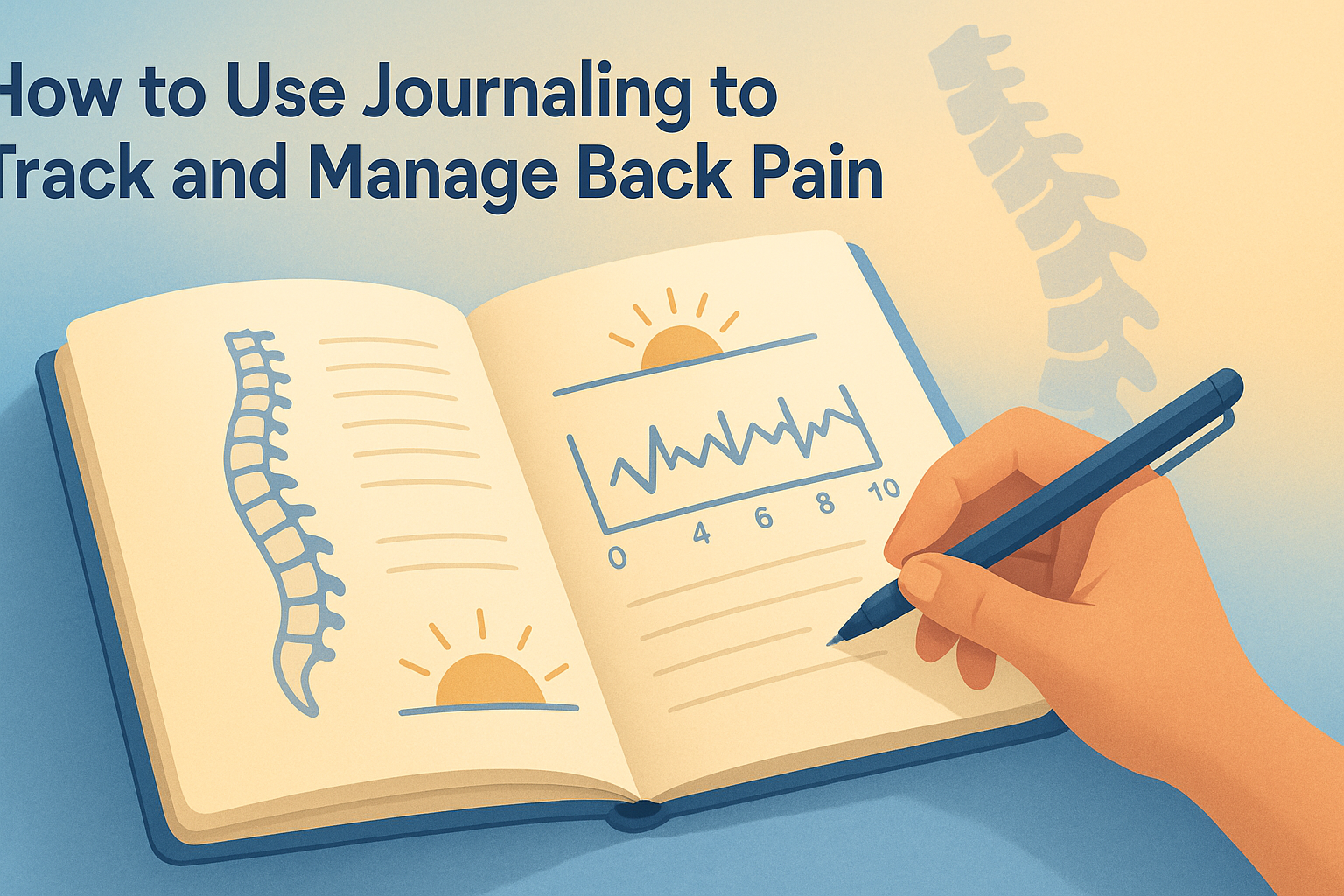How to Use Journaling to Track and Manage Back Pain
Back pain can be a persistent and frustrating condition that affects daily life. While there are numerous ways to manage it, journaling has emerged as a powerful tool to track symptoms and identify triggers. This post will guide you on how to use journaling effectively to manage your back pain.
Table of Contents
1. Introduction to Journaling for Back Pain
2. Why Journaling Helps with Pain Management
3. Setting Up Your Pain Journal
4. Key Elements to Include in Your Journal
5. Analyzing Your Journal Entries
6. Conclusion
7. FAQs

Introduction to Journaling for Back Pain
Journaling is more than just a way to document your thoughts and feelings. It’s a proven therapeutic tool that can help you track your back pain patterns, identify triggers, and develop strategies for managing pain. Let’s explore how you can make journaling a part of your back pain management routine.
Why Journaling Helps with Pain Management
Journaling offers several benefits when it comes to managing back pain:
1. Identifying Patterns: By keeping a detailed record of your pain, you can identify specific patterns and triggers. This might include activities, diet, stress levels, and even weather conditions.
2. Enhancing Communication with Healthcare Providers: A well-maintained journal can provide valuable insights to your healthcare provider, aiding in diagnosis and treatment adjustments.
3. Emotional Release: Chronic pain can lead to stress and anxiety. Journaling provides an outlet for these emotions, helping to reduce mental strain. 🧘♀️
Setting Up Your Pain Journal
Starting a pain journal doesn’t require any special tools. Here’s how you can get started:
Choose Your Medium: Decide whether you prefer a physical notebook or a digital app. Both have their advantages, so pick what works best for you.
Be Consistent: Aim to write in your journal daily. Consistency will help in identifying patterns over time.
Set a Routine: Try to journal at the same time every day, such as in the morning or before bed, to make it a habit.
Key Elements to Include in Your Journal
To make your journal as effective as possible, include the following elements:
Date and Time: Always note when you’re writing. This helps in tracking the progression of pain.
Pain Scale: Rate your pain on a scale from 1 to 10, with 10 being the most severe. 📉
Location of Pain: Specify where the pain is located, as this can help in understanding underlying issues.
Activities: Document any activities you engaged in before the pain started. This could include exercise, sitting for long periods, or lifting heavy objects.
Mood and Stress Levels: Note how you’re feeling emotionally. Stress and mood swings can often exacerbate pain.
Diet and Sleep Patterns: Record what you’ve eaten and how well you’ve slept. Nutrition and rest can significantly impact pain levels.
Analyzing Your Journal Entries
Once you’ve been journaling for a while, it’s time to analyze your entries:
Look for Patterns: Review your entries weekly or monthly to identify recurring patterns and triggers. 📈
Adjust Your Routine: Use your findings to make necessary adjustments in your activities, diet, or stress management strategies.
Consult with Professionals: Share your journal with healthcare providers to enhance their understanding of your condition.
Conclusion
Journaling can be a transformative tool in managing back pain. By tracking your symptoms and identifying triggers, you can take control of your pain management journey. Remember, consistency is key, and over time, you’ll likely find patterns that help you make informed decisions about your health.
FAQs
Q: How often should I update my pain journal?
A: For the best results, update your journal daily. This helps in accurately tracking patterns and triggers.
Q: Can I use a digital journal instead of a physical one?
A: Absolutely! Digital journals can be more convenient for some, especially with the availability of apps that can remind you to update your entries.
Q: What if I notice no patterns in my journal?
A: Give it time. Patterns may take weeks or even months to become apparent. If you’re struggling, consider discussing your journal with a healthcare professional for further insights.
Embrace the power of journaling, and take a proactive step towards managing your back pain effectively. 📖✨
